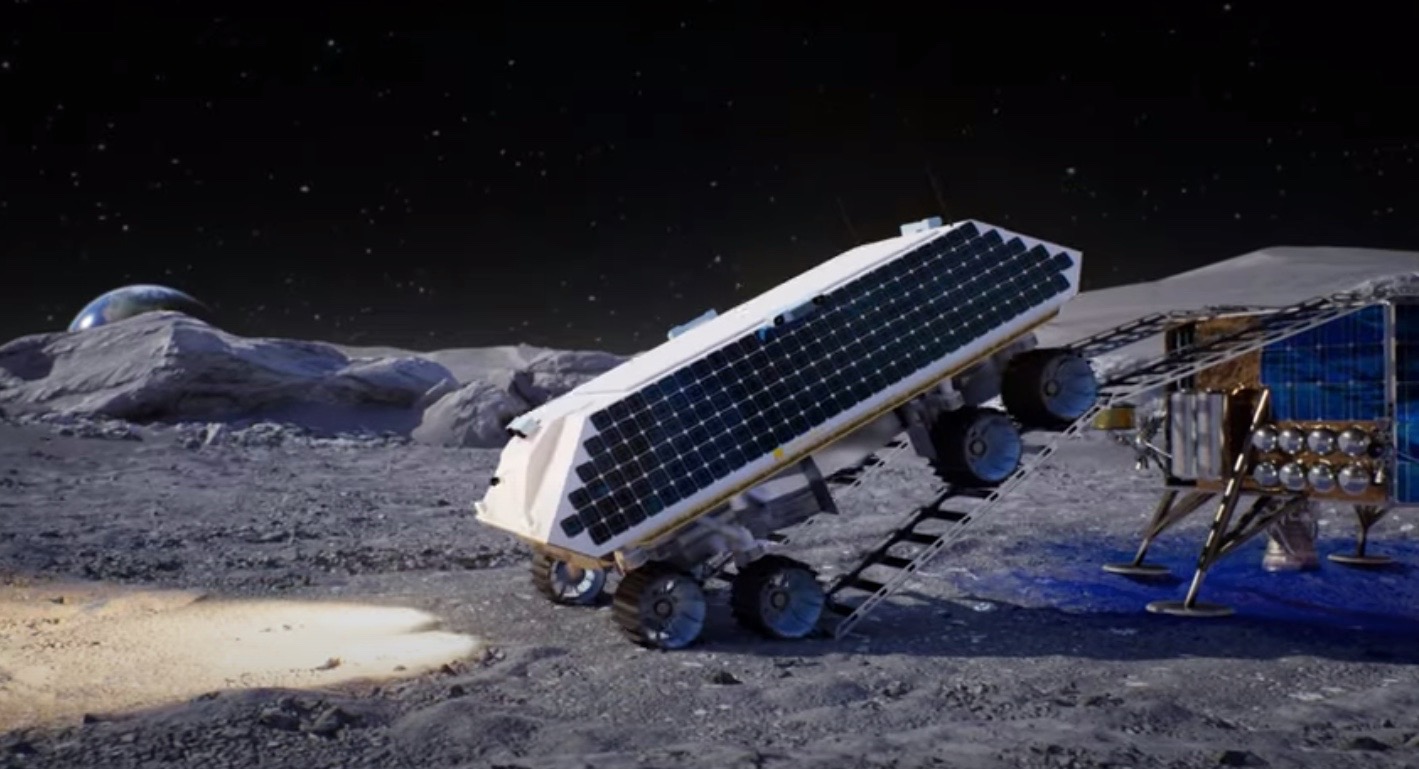
Rockets may help humanity explore the solar system in more ways than one.
Three companies — Masten Space Systems, Lunar Outpost and Honeybee Robotics — are developing a new system that would use rockets to mine water ice on the moon.
Water ice is thought to be abundant in the moon's polar regions, especially on the permanently shadowed floors of some craters. Harvesting this resource is crucial to establishing a permanent human presence on the moon, NASA officials and exploration advocates say, and not just because it will help keep astronauts alive. Water ice can be broken into its constituent hydrogen and oxygen, the chief components of rocket fuel, allowing spacecraft to top up their tanks away from Earth.
Related: NASA picks Intuitive Machines to land an ice-mining drill on the moon
To spur development of moon mining tech, NASA recently established the "Break the Ice Lunar Challenge." The contest will award up $500,000 total to the most promising resource-harvesting concepts during its first phase, which wraps up soon; winners will be announced on Aug. 13.
The Masten-Lunar Outpost-Honeybee Robotics team has thrown its hat into the Challenge ring with its Rocket Mining System, which would employ a rocket engine attached to an 1,800-lb. (818 kilograms) rover. When the rover reaches a suitably ice-laden site, the dome-enclosed engine would deploy and fire up, blasting lunar dirt and gravel into a vacuum-like device that separates and stores the particles of water ice.
"The system is projected to mine up to 12 craters per day and produce 100 kg [220 lbs.] of ice per crater," Masten representatives wrote in a description of the project. "That would allow us to recover more than 420,000 kg [926,000 lbs.] of lunar water per year!"
Get the Space.com Newsletter
Breaking space news, the latest updates on rocket launches, skywatching events and more!
The harvested ice could also be used to fuel the rocket engine, allowing it to operate for more than five years on the lunar surface, they added.
If NASA ends up funding the Rocket Mining System and the tech does make it to the moon, it will likely fly aboard a Masten lunar lander. The company's first mission to the lunar surface, using its XL-1 lander, is currently scheduled to launch in 2023 on a SpaceX Falcon 9 rocket. That mission will carry a variety of commercial payloads, as well as eight experiments for NASA, to the moon's south polar region.
Lunar Outpost would provide the Rocket Mining System's rover, and Honeybee Robotics' PlanetVac tech would form the core of the ice-handling system.
Mike Wall is the author of "Out There" (Grand Central Publishing, 2018; illustrated by Karl Tate), a book about the search for alien life. Follow him on Twitter @michaeldwall. Follow us on Twitter @Spacedotcom or Facebook.
Join our Space Forums to keep talking space on the latest missions, night sky and more! And if you have a news tip, correction or comment, let us know at: community@space.com.

Michael Wall is a Senior Space Writer with Space.com and joined the team in 2010. He primarily covers exoplanets, spaceflight and military space, but has been known to dabble in the space art beat. His book about the search for alien life, "Out There," was published on Nov. 13, 2018. Before becoming a science writer, Michael worked as a herpetologist and wildlife biologist. He has a Ph.D. in evolutionary biology from the University of Sydney, Australia, a bachelor's degree from the University of Arizona, and a graduate certificate in science writing from the University of California, Santa Cruz. To find out what his latest project is, you can follow Michael on Twitter.









